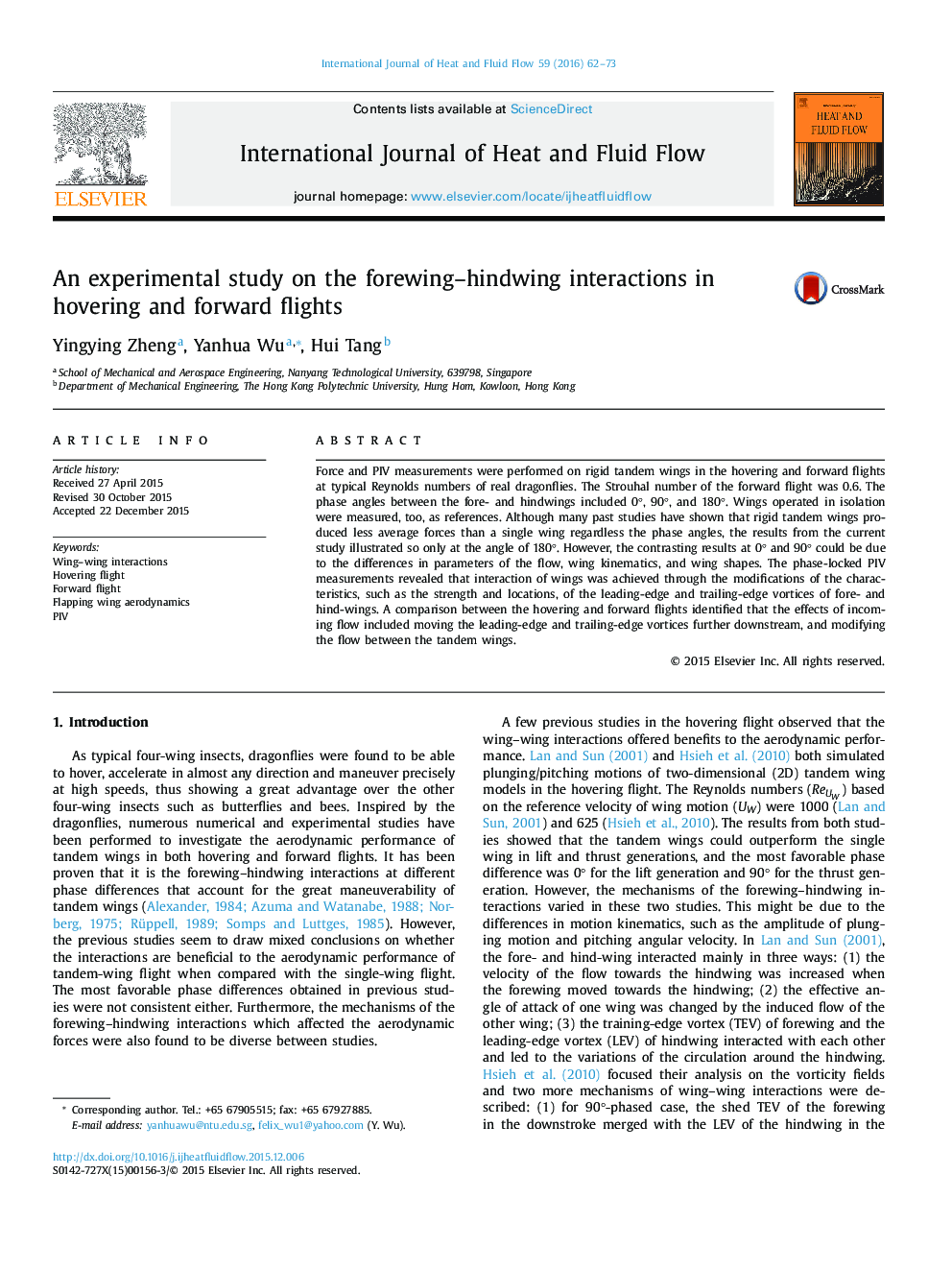| Article ID | Journal | Published Year | Pages | File Type |
|---|---|---|---|---|
| 655017 | International Journal of Heat and Fluid Flow | 2016 | 12 Pages |
Abstract
Force and PIV measurements were performed on rigid tandem wings in the hovering and forward flights at typical Reynolds numbers of real dragonflies. The Strouhal number of the forward flight was 0.6. The phase angles between the fore- and hindwings included 0°, 90°, and 180°. Wings operated in isolation were measured, too, as references. Although many past studies have shown that rigid tandem wings produced less average forces than a single wing regardless the phase angles, the results from the current study illustrated so only at the angle of 180°. However, the contrasting results at 0° and 90° could be due to the differences in parameters of the flow, wing kinematics, and wing shapes. The phase-locked PIV measurements revealed that interaction of wings was achieved through the modifications of the characteristics, such as the strength and locations, of the leading-edge and trailing-edge vortices of fore- and hind-wings. A comparison between the hovering and forward flights identified that the effects of incoming flow included moving the leading-edge and trailing-edge vortices further downstream, and modifying the flow between the tandem wings.
Keywords
Related Topics
Physical Sciences and Engineering
Chemical Engineering
Fluid Flow and Transfer Processes
Authors
Yingying Zheng, Yanhua Wu, Hui Tang,
